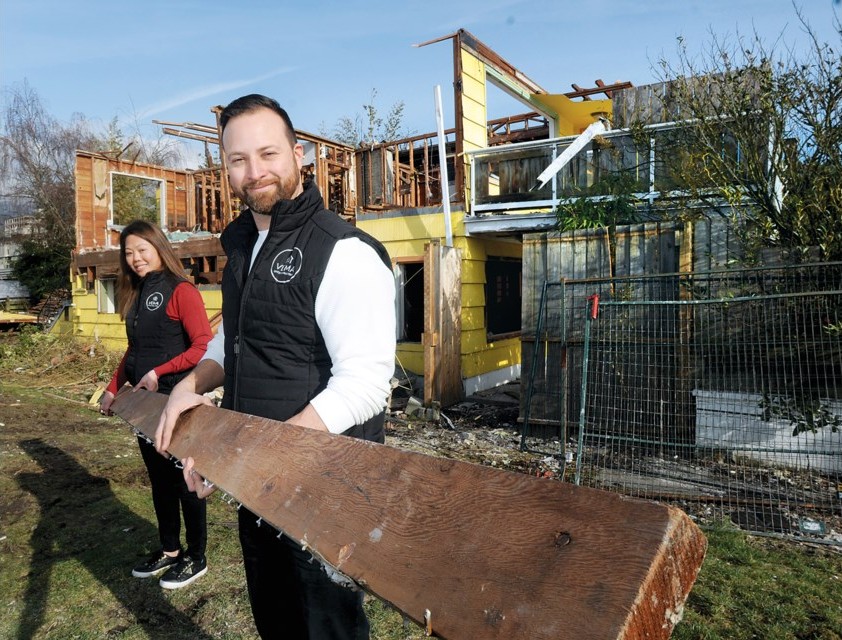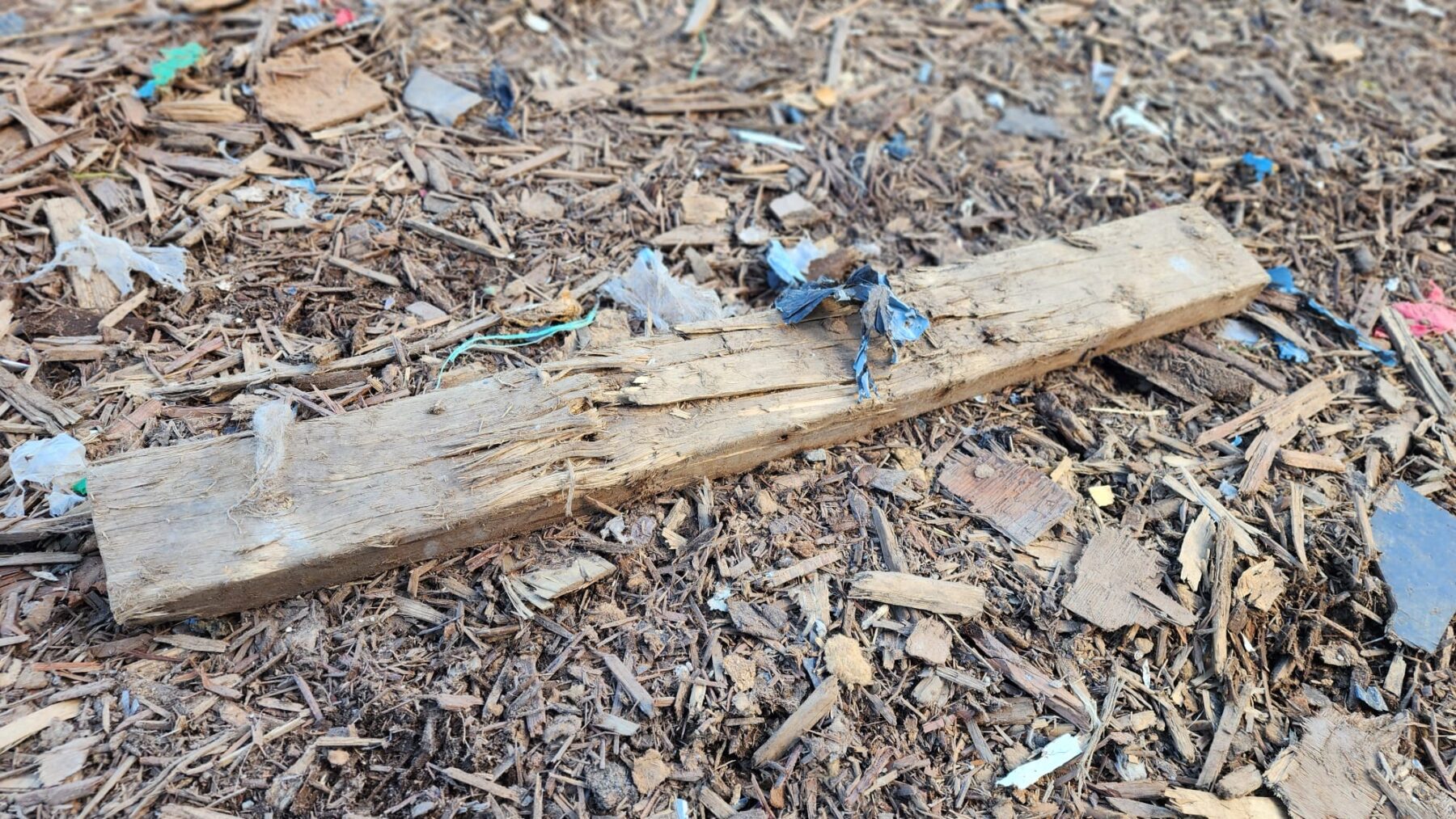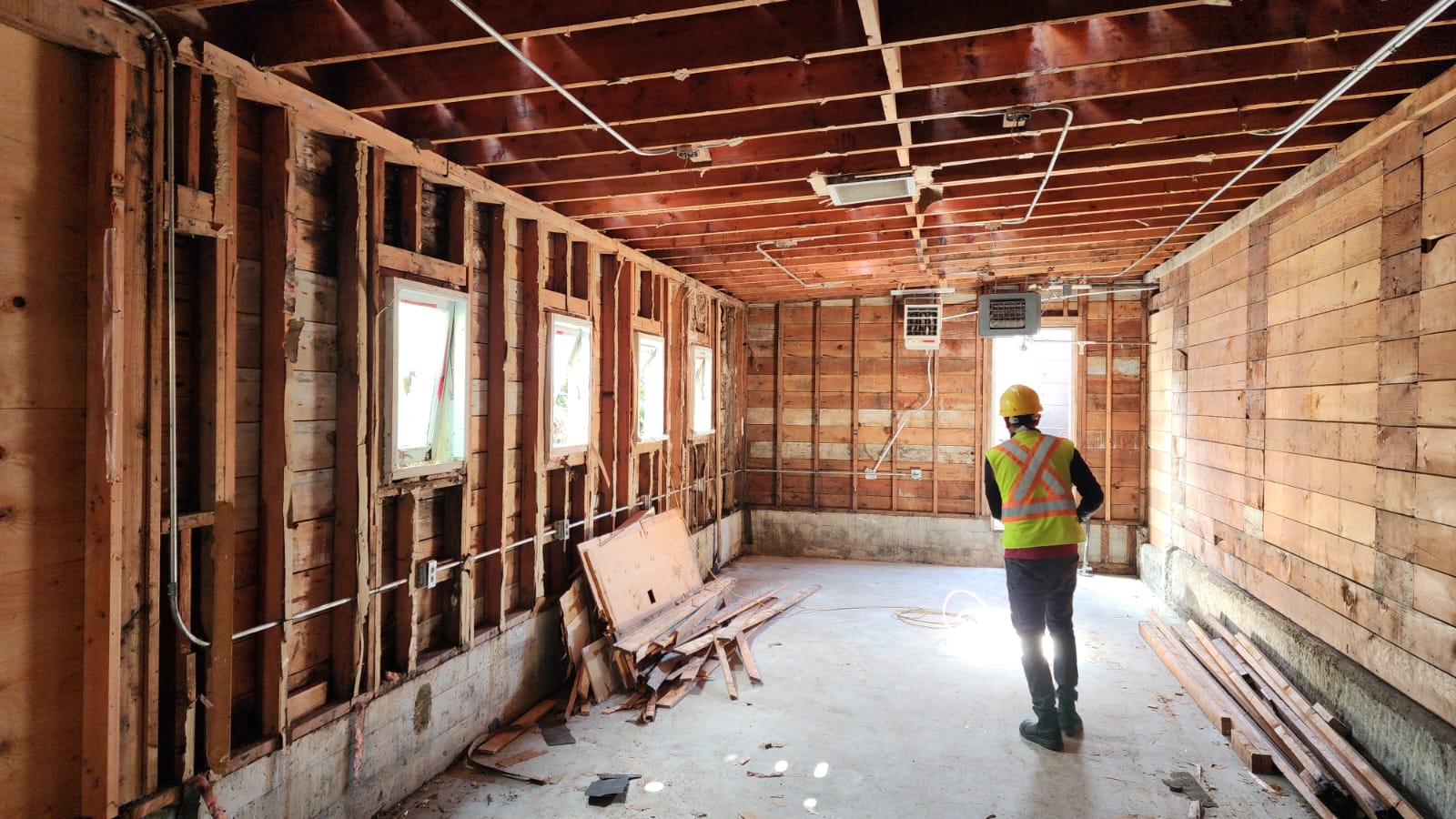Full circle: Pushing deconstruction forward
Historic Vancouver wood is being reused in new homes instead of getting thrown away.

Key Takeaways:
- Nearly 30,000 single-family homes have been demolished in Metro Vancouver since 2012, with projections showing another 15,000 will be torn down in the next five years due to upzoning. This translates to about 300 million pounds of lumber headed to landfills.
- Erick Serpas Ventura, founder of VEMA Deconstruction, advocates for dismantling homes to salvage and repurpose high-quality lumber, particularly Douglas fir, for new builds.
- VEMA is collaborating with academic institutions and industry partners to grade reclaimed wood and manufacture prefabricated wall panels from 70% salvaged lumber. These panels are already being used in new builds and retrofits.
The Whole Story:
Mountains of lumber from crushed and ripped-up B.C. homes sit in a Delta landfill, with birds circling above. For some, it’s a sign of progress as demolition is making way for new housing, but for deconstruction experts like Erick Serpas Ventura, it’s a massive missed opportunity that he is working to unlock.
“It’s brutal,” said Ventura, who recently visited the landfill to truly take in how much construction material is being dumped. “I don’t want to leave this for my kids. This is our legacy; we’re only here once, and this is what we leave them? It’s not great. I feel like people don’t know in this picture that it’s their house. They think it’s gone, and then who cares?”
New research found that nearly 30,000 single-family homes were demolished in Metro Vancouver between 2012 and 2023 to make way for higher-density developments, with demolitions expected to increase by 35% over the next decade due to upzoning policies.
“We’re looking at about 15,000 homes that will be demolished in the next five years,” said Ventura. “We calculated that is about 300 million pounds of lumber that will go to the landfill. And that’s a lost opportunity.”

Through his company, VEMA Deconstruction, Ventura is working to not only salvage material. He wants to come full circle, championing efforts to use historic lumber harvested from aging homes to build new structures. For him, Vancouver’s character homes are part of his own story. His family moved to the region when he was just 3 and a half years old, and he grew up in a three-storey character home in the Riley Park neighbourhood in Vancouver, which helped him feel connected to the Canadian experience.
“You were able to weave yourself into the fabric of Canada, which was great as an immigrant,” he said, remembering the smell of the lumber and getting his first Nintendo under the Christmas tree. “A drunk driver went right through the basement of that house when I was six or seven years old. Because of that strong Douglas fir, it didn’t collapse.”
After spending a decade in the Royal Canadian Air Force, Ventura sought a new way to give back to his community. He began preparing for a career in passive house construction, but after learning about deconstruction, he was hooked.
“I felt I could have a better environmental impact, and I always looked to give back to my city, which has accepted me and my family,” he said.
He believes the deconstruction sector has massive potential to divert material from landfills and build new affordable homes. While reclaimed wood has been chiefly used to create architectural elements and furniture, Ventura envisions remixing these old materials to build entire structures.
“We are one of the few provinces with a different type of lumber used to build homes in the past: Douglas fir,” explained Ventura. “95% of Canada used SPF to build homes in the past, so what we have is very special. It’s old growth forest material that is 2,000 years old, but it’s gone and unavailable to use anymore.”
First, these woods have to be categorized and tested. 1920s and older is called first growth era material. From 1920 to 1945 is Antique and 1945 to 1990 is Vintage lumber containing Douglas fir lumber. Anything from 1990 onwards is Modern lumber SPF.
“The first-growth era lumber is great for architectural elements, hobbies, crafts, furniture,” said Ventura. “Then the vintage is the right dimension for building homes for their characterisation that its 1.5×3.5 dimensions and a lot of the lumber comes with a grade stamp suited, especially well for prefab and modular builds.”

Not only is VEMA working with the National Lumber Grading Association and university researchers from UBC and the University of Alberta to officially grade reclaimed lumber. They have partnered with Kiwi Innovation and Footprint Design to create prefabricated wall panels made from 70% deconstructed lumber.
Ventura explained that this reduces construction costs, speeds up builds, and keeps these storied materials in the built environment rather than tossing them aside.
“We’re changing an industry, disrupting it and professionalizing it,” said Ventura. “It’ll come to the point one day where it will just be deconstruction doing tendering on bids. And only if it cannot be deconstructed will demolition be allowed to bid.”
It’s not just theoretical. VEMA and its partners are using the prefab panels to build a 3,700-square-foot, net-zero energy-ready, carbon performance EL-4 home in North Burnaby. They are also working with Best Builders to retrofit a 1908 character home and infill the rear of the property to build a new home out of reclaimed material panels.
“There’s a lot of support from the community,” said Ventura. “I just think right now what’s lacking is education. People don’t know that after their home is crushed, it goes to the landfill. And deconstruction doesn’t cost more, and it doesn’t take longer.”


